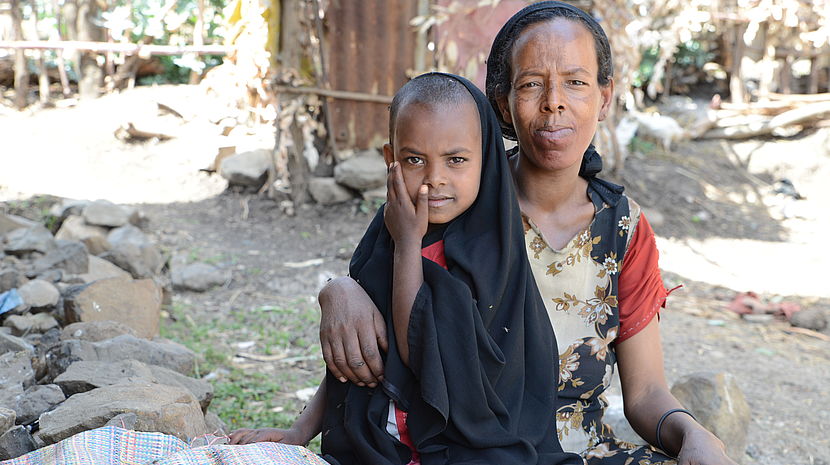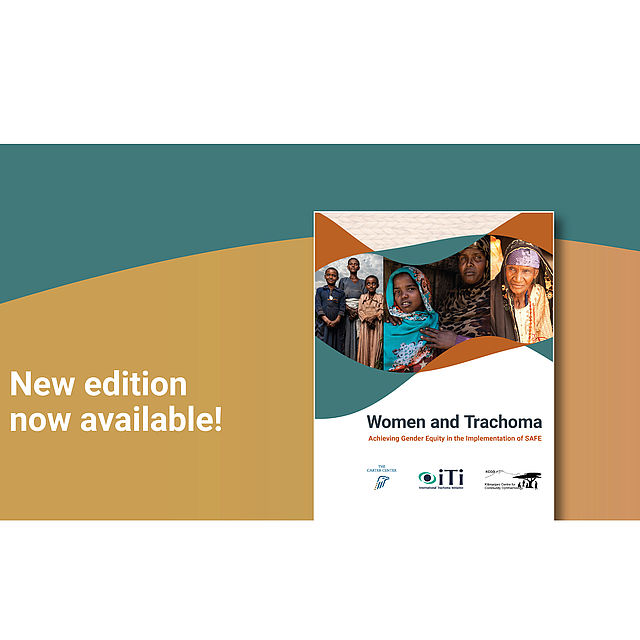CBM Contributes to New Women and Trachoma Manual

Ansha with her daughter Fetehea. Ansha lives in a village in the Amhara region of Ethiopia. She had trachoma (trichiasis). She received surgery with CBM support through its partner ORDA.
CBM
The manual, to which CBM contributed case studies, provides evidence for engaging women and girls in trachoma planning and offers practical solutions for accessing surgical services and improving environmental conditions.
A society’s gender norms often mean that women and men have different roles and responsibilities, opportunities, and constraints. This inequality causes women to contract trachoma in greater numbers than men, with an even larger negative impact on their families and communities.
Women are almost twice as likely as men to need surgery to prevent trachoma-related blindness. A range of barriers to surgery include less autonomy, reduced self-esteem, infrequent participation in community activities, and limited decision-making authority within a household.
Why women Are at Higher Risk of Trachoma Infection
Trachoma is the leading infectious cause of blindness in the world. It can be easily transmitted from person to person. Lack of access to water and sanitation are also important factors in the transmission of trachoma.
Repeated infection results in the development of scar tissue on the inside of the eyelid, causing the eyelashes to turn inward and touch the cornea. This condition is known as trachomatous trichiasis (TT). When the eyelashes scratch the cornea, it causes pain and damage and can lead to blindness.
The strategy endorsed by the WHO to eliminate trachoma is the SAFE strategy - surgery, antibiotics, facial cleanliness, and environmental change.
The discrepancy between the risk of infection between men and women is related to gender differences in their roles. Women are more susceptible to trachoma infection (and thus to TT) due to their disproportionally high contact with children who show the highest prevalence of active infections.
Achieving Gender Equity to Eliminate Trachoma
The Women and Trachoma manual is designed as a guide for those working in the field to help them develop gender-equitable strategies to end trachoma. It puts forward the argument that if we are to meet the target set by the WHO to eliminate trachoma as a public health problem by 2030, we must elevate and include women in the design and provision of programmes. More than that, we must also target them so that they can get the necessary help and access to resources to protect and treat themselves and their families.
The manual, to which CBM contributed case studies on the importance of having female TT surgeons in Nigeria and gender considerations in Pakistan, provides evidence for why programmes should consider gender roles and responsibilities when working to eliminate trachoma. It offers insights into engaging women and girls in trachoma planning, not only as beneficiaries of services but also in their delivery. It explains how existing surveillance tools can be revised, provides examples which demonstrate how to engage women and girls in trachoma planning, offers practical solutions for accessing surgical services and improving environmental conditions.
